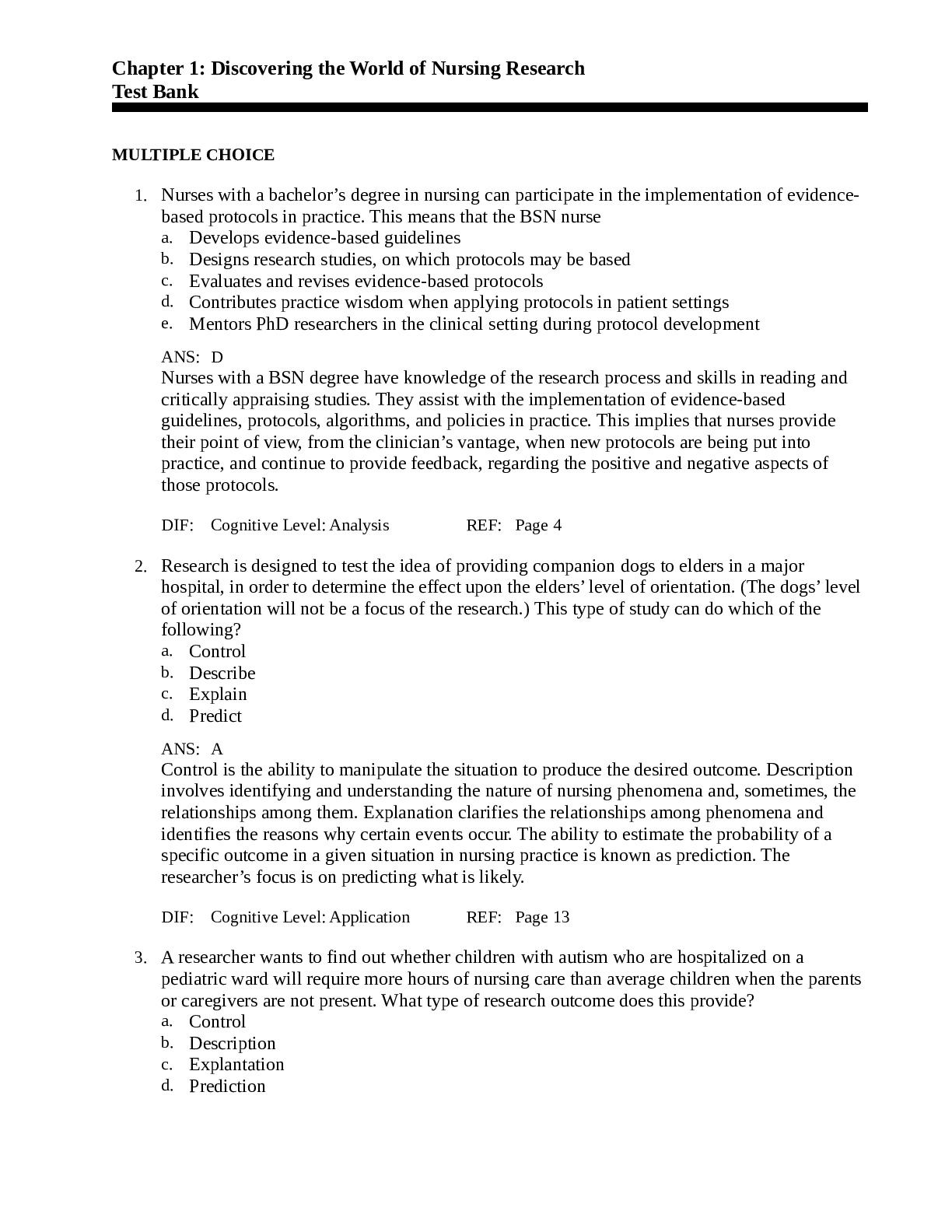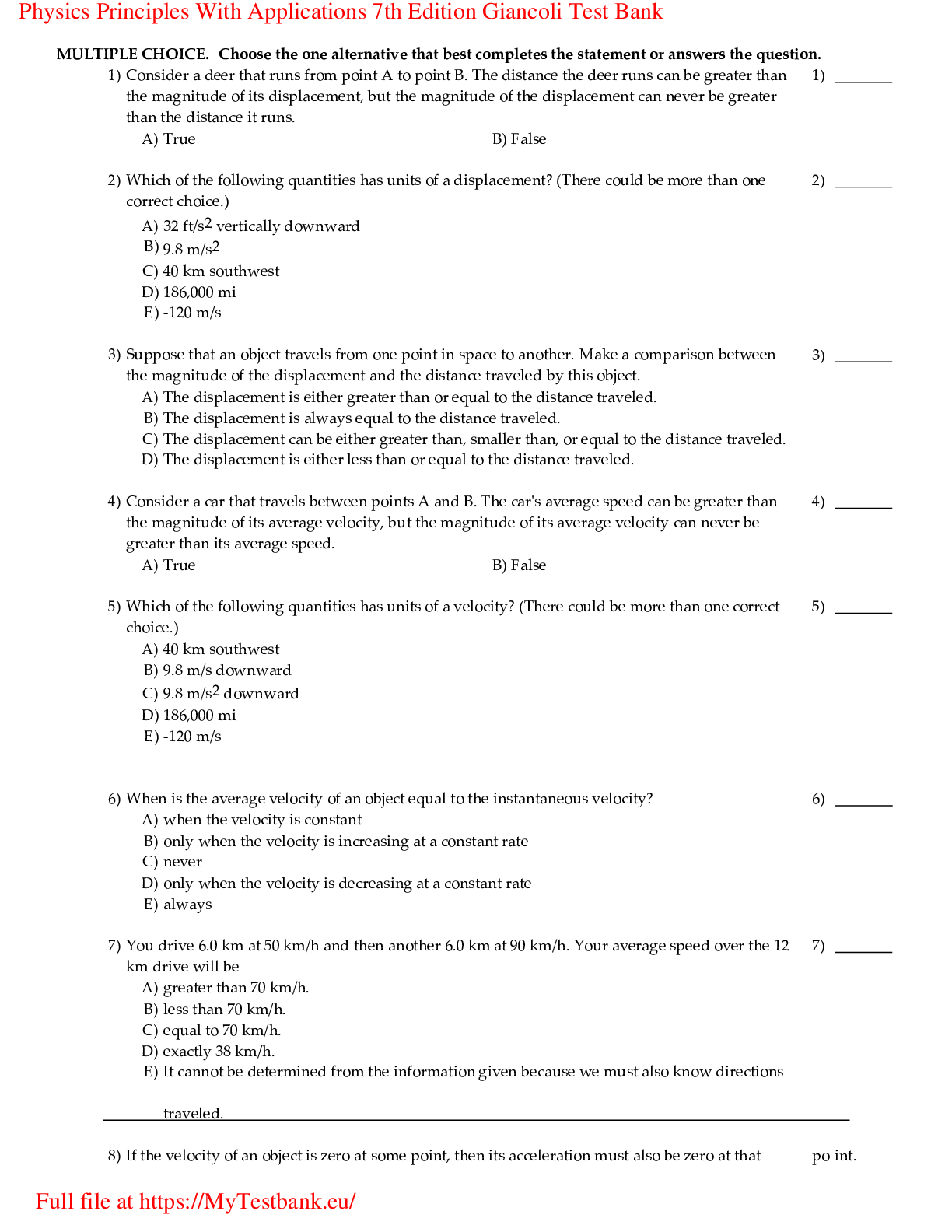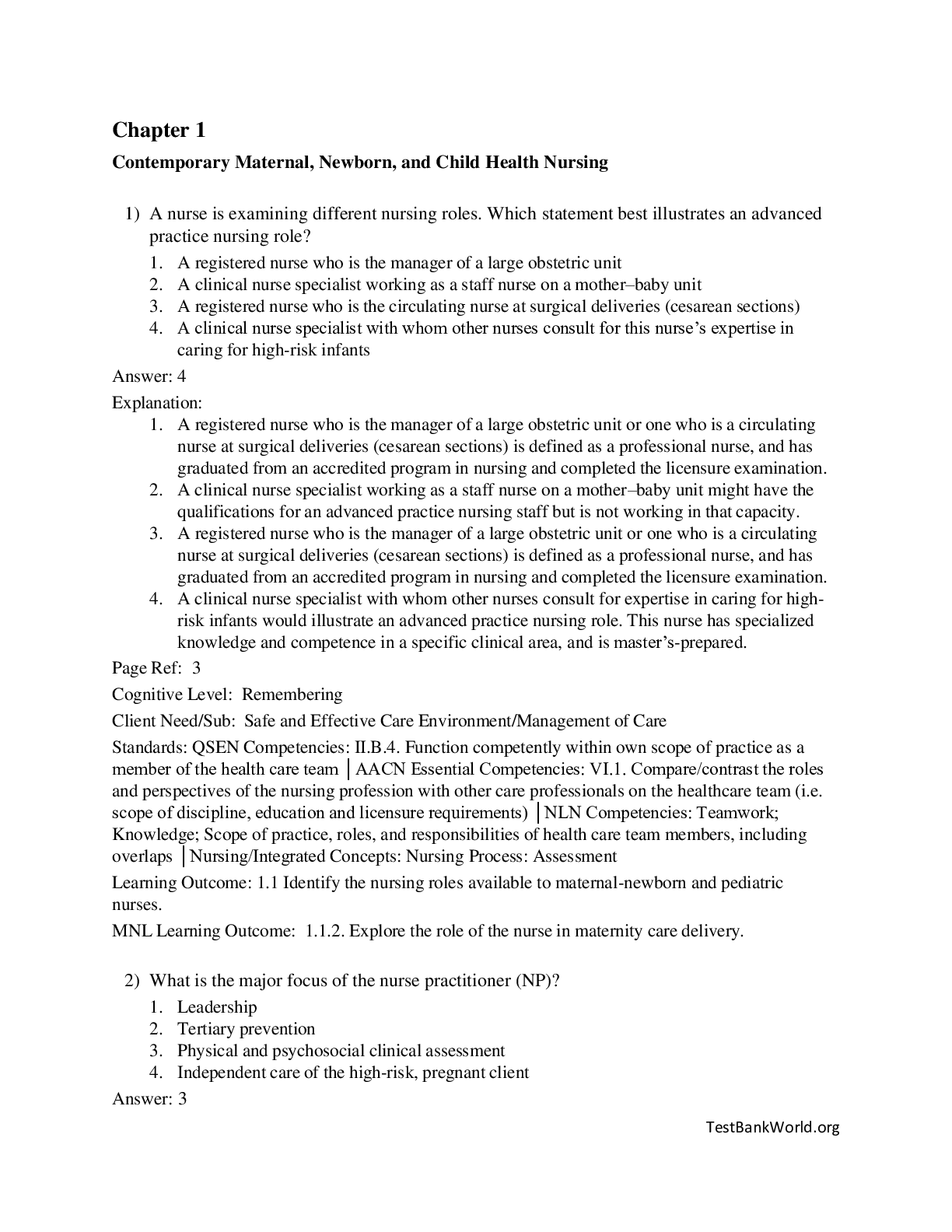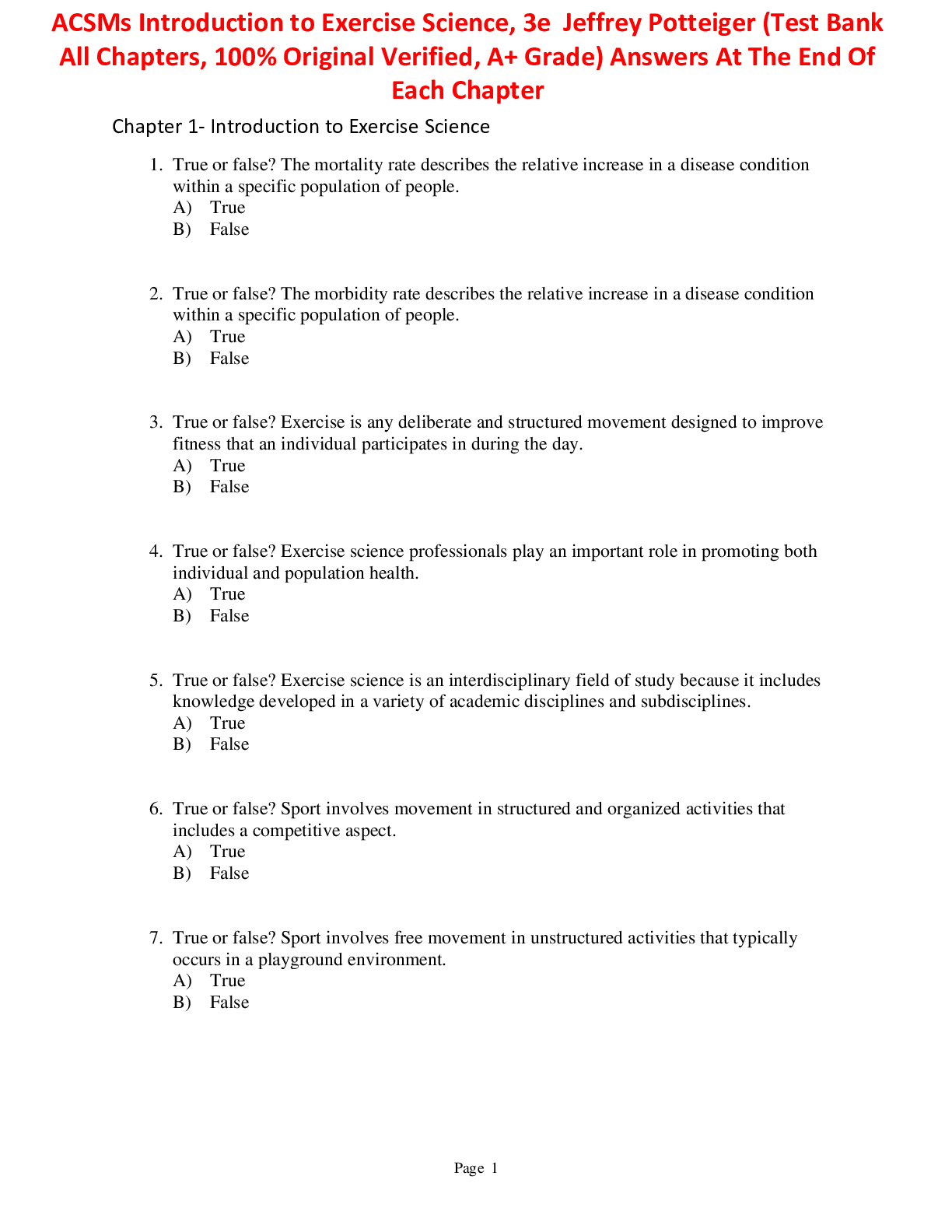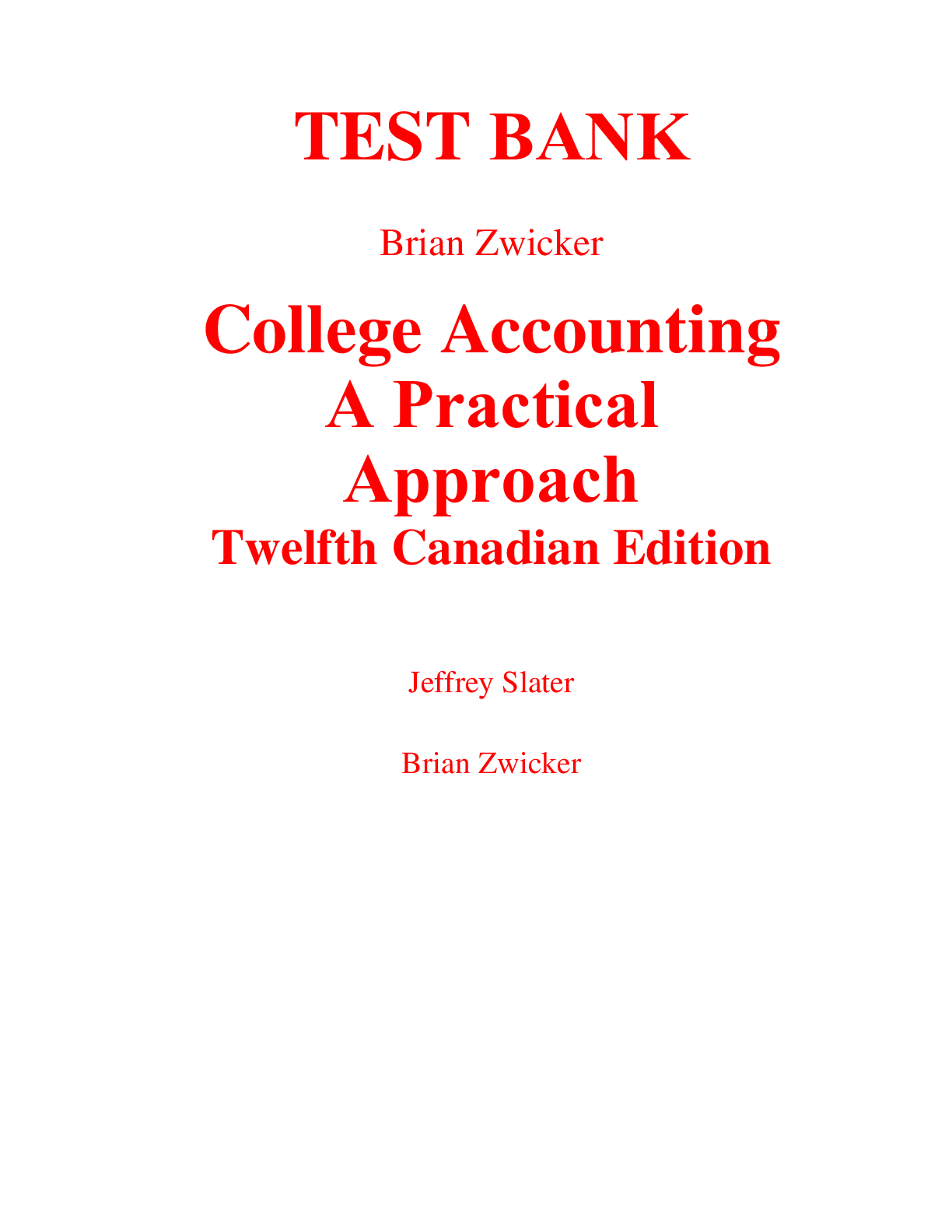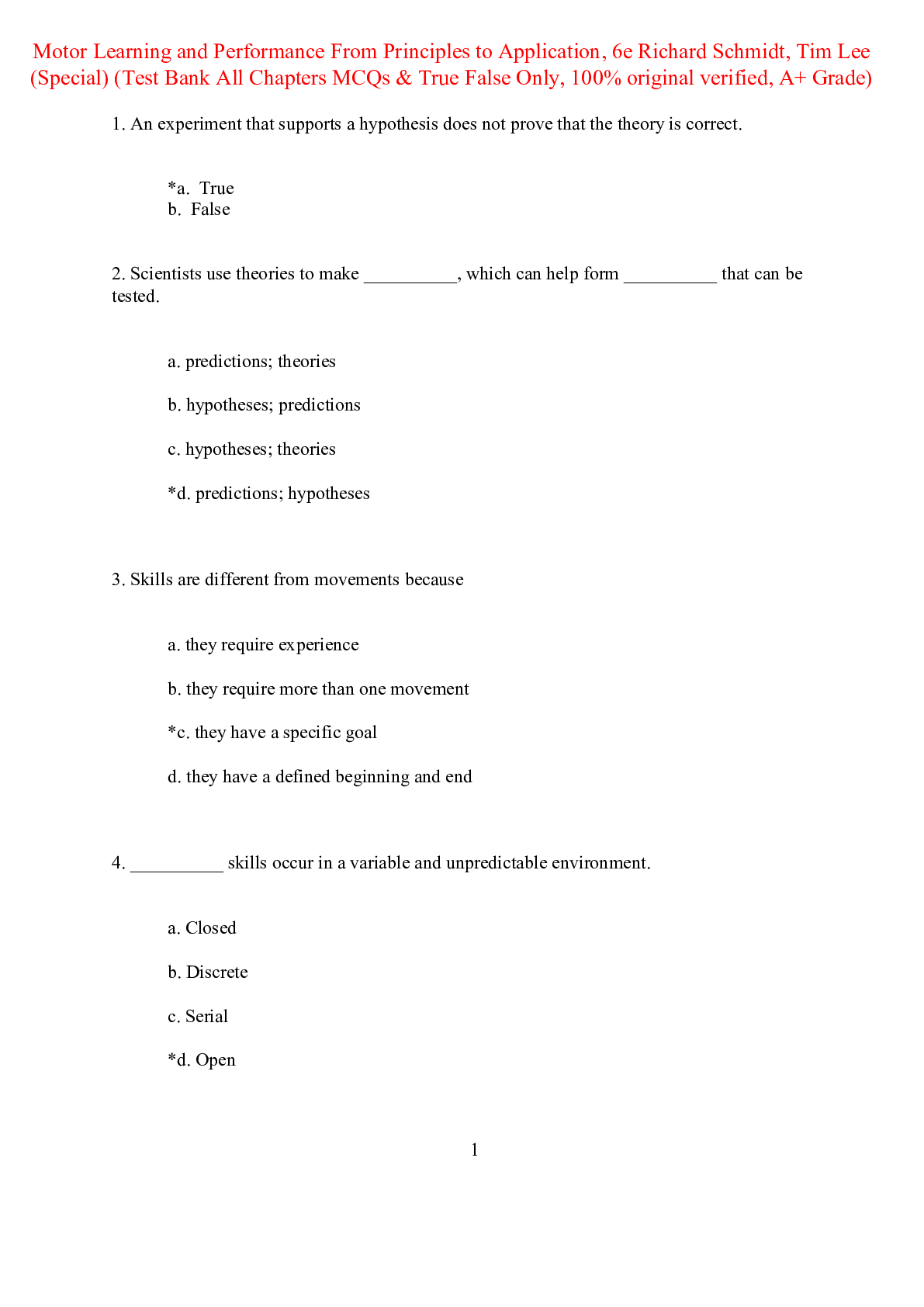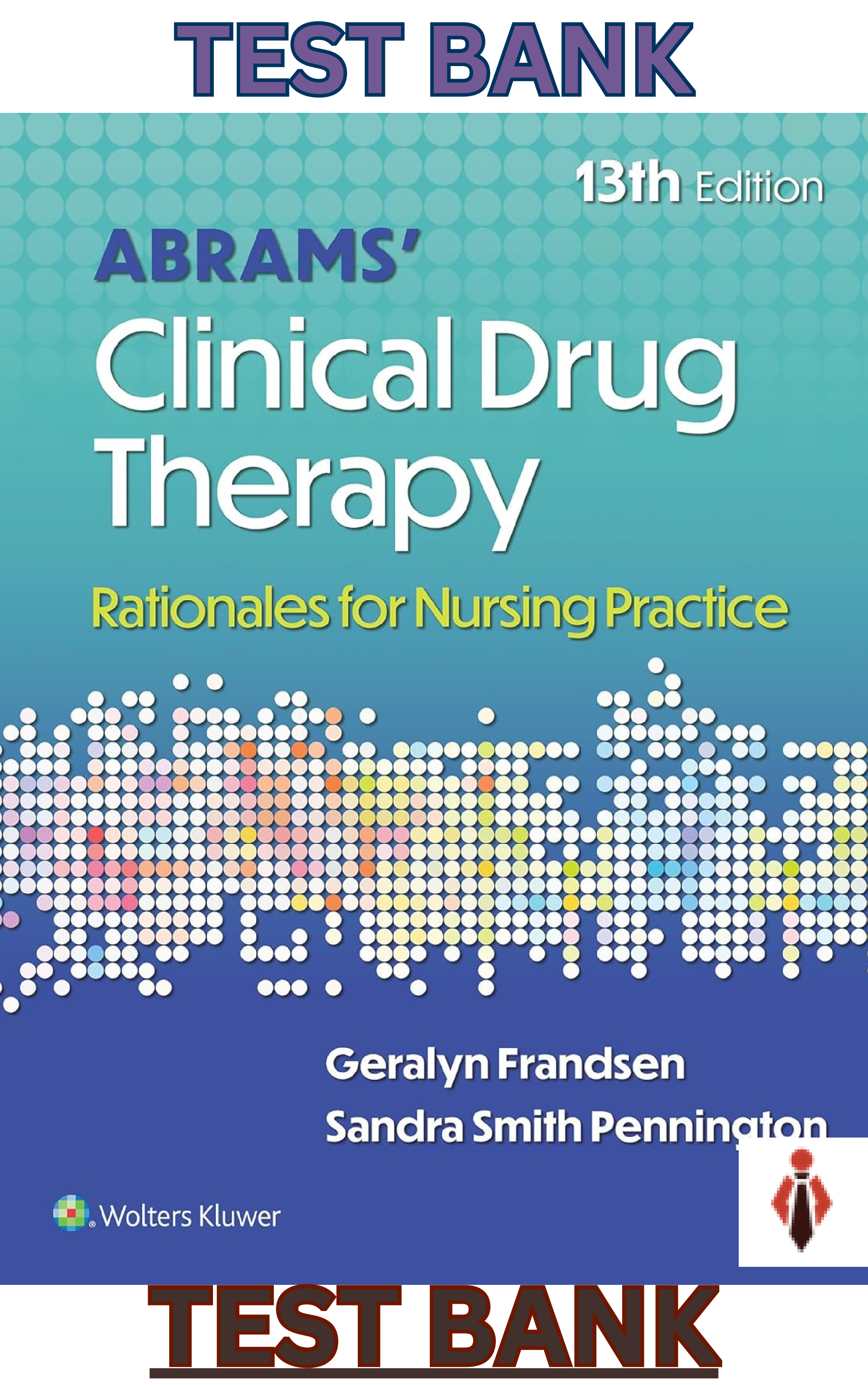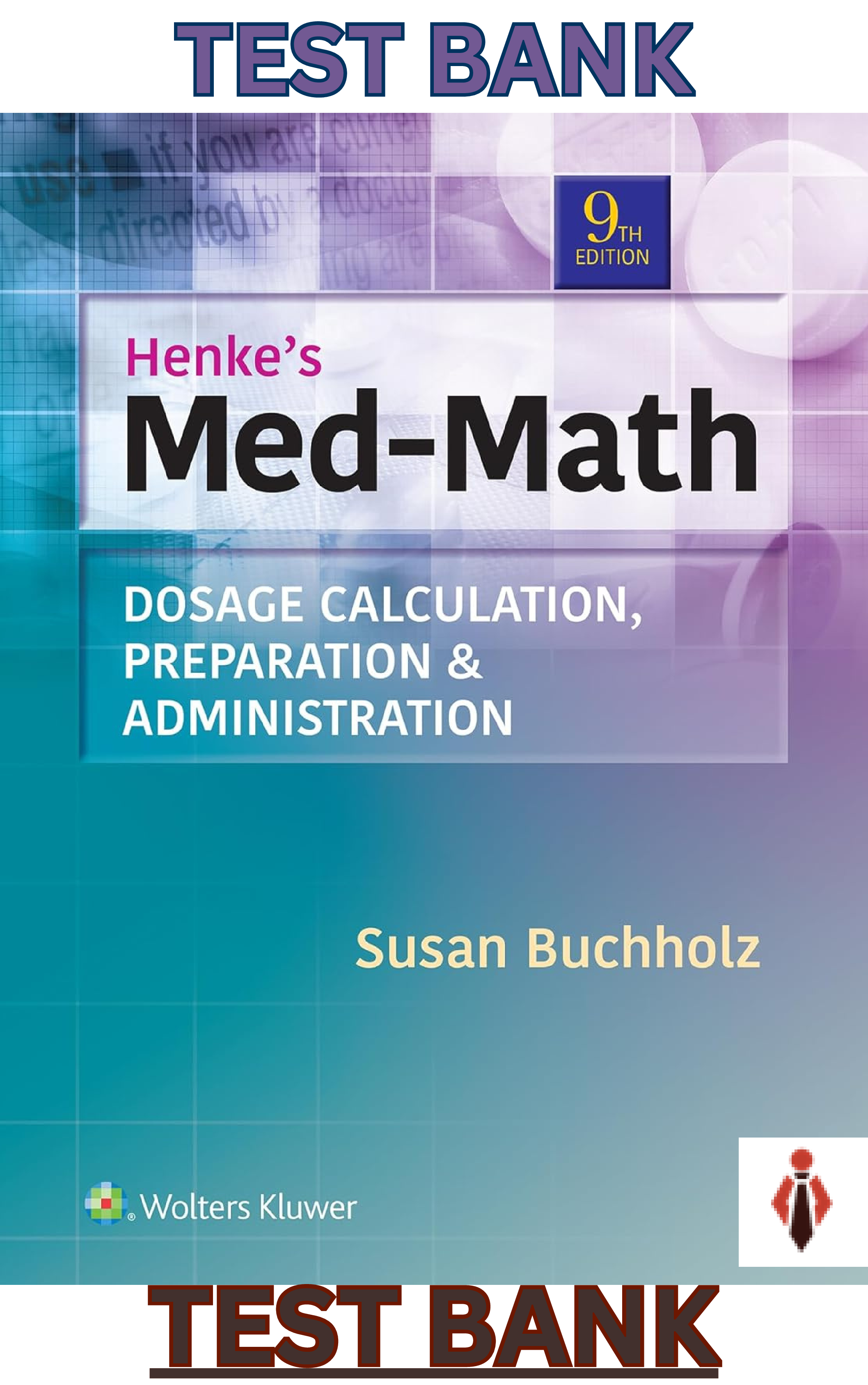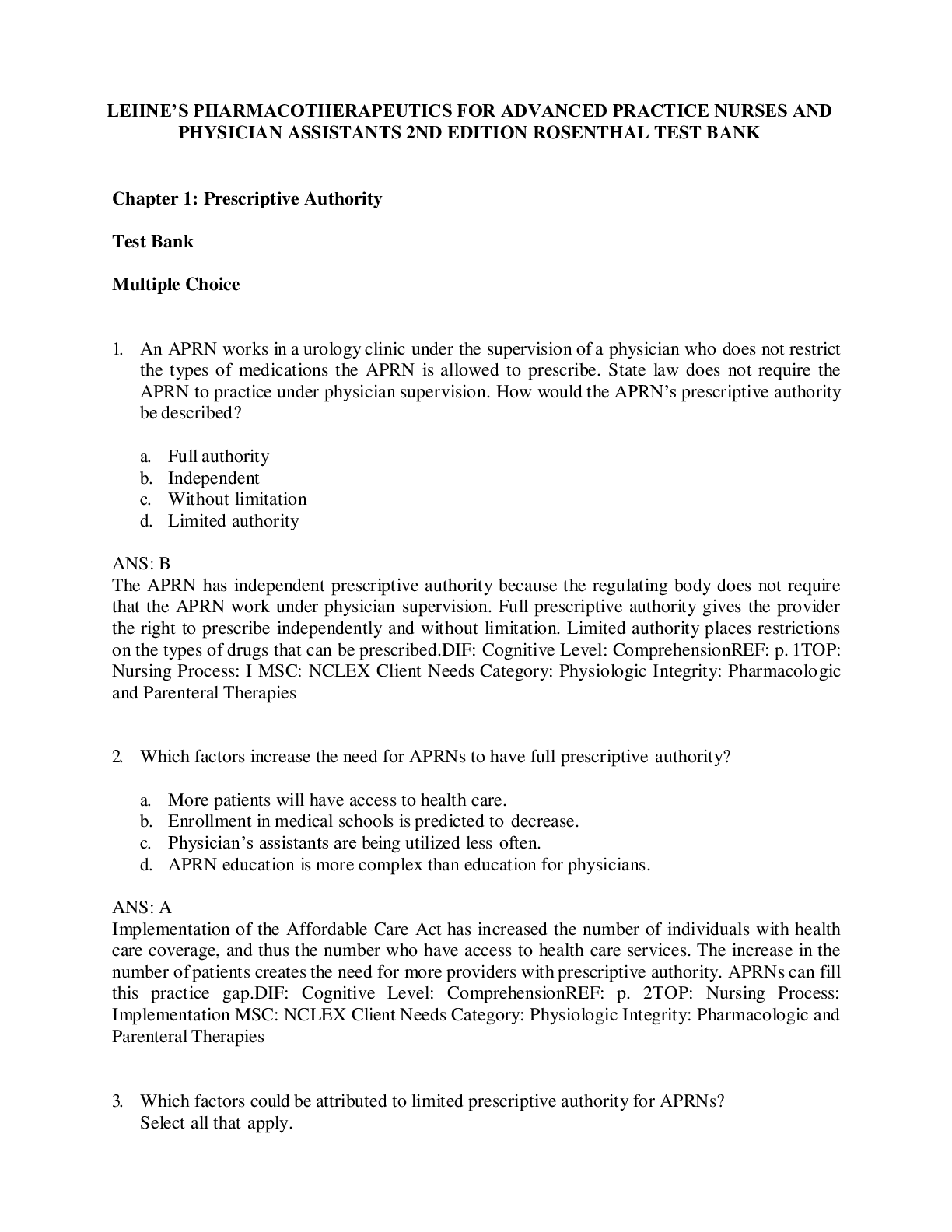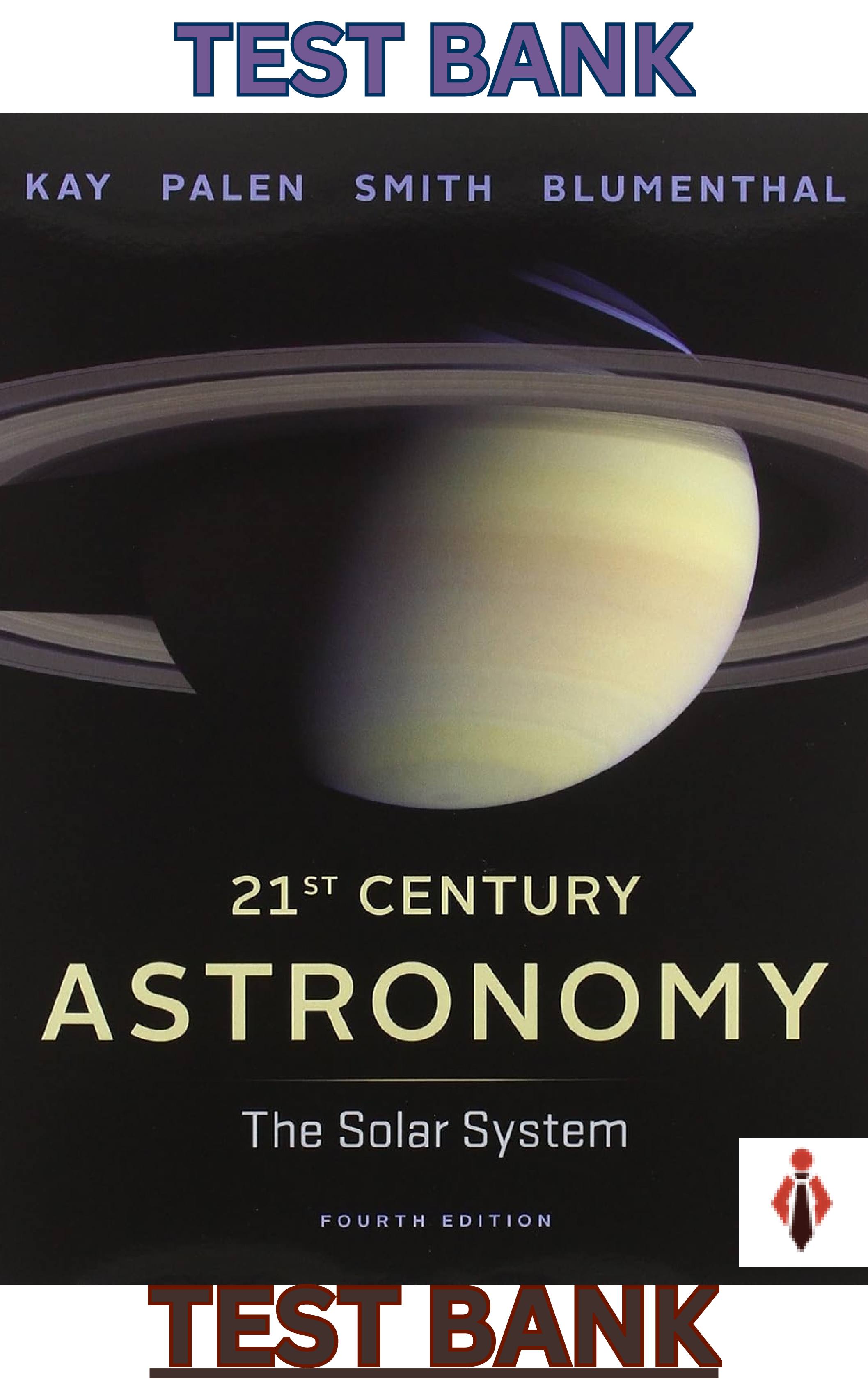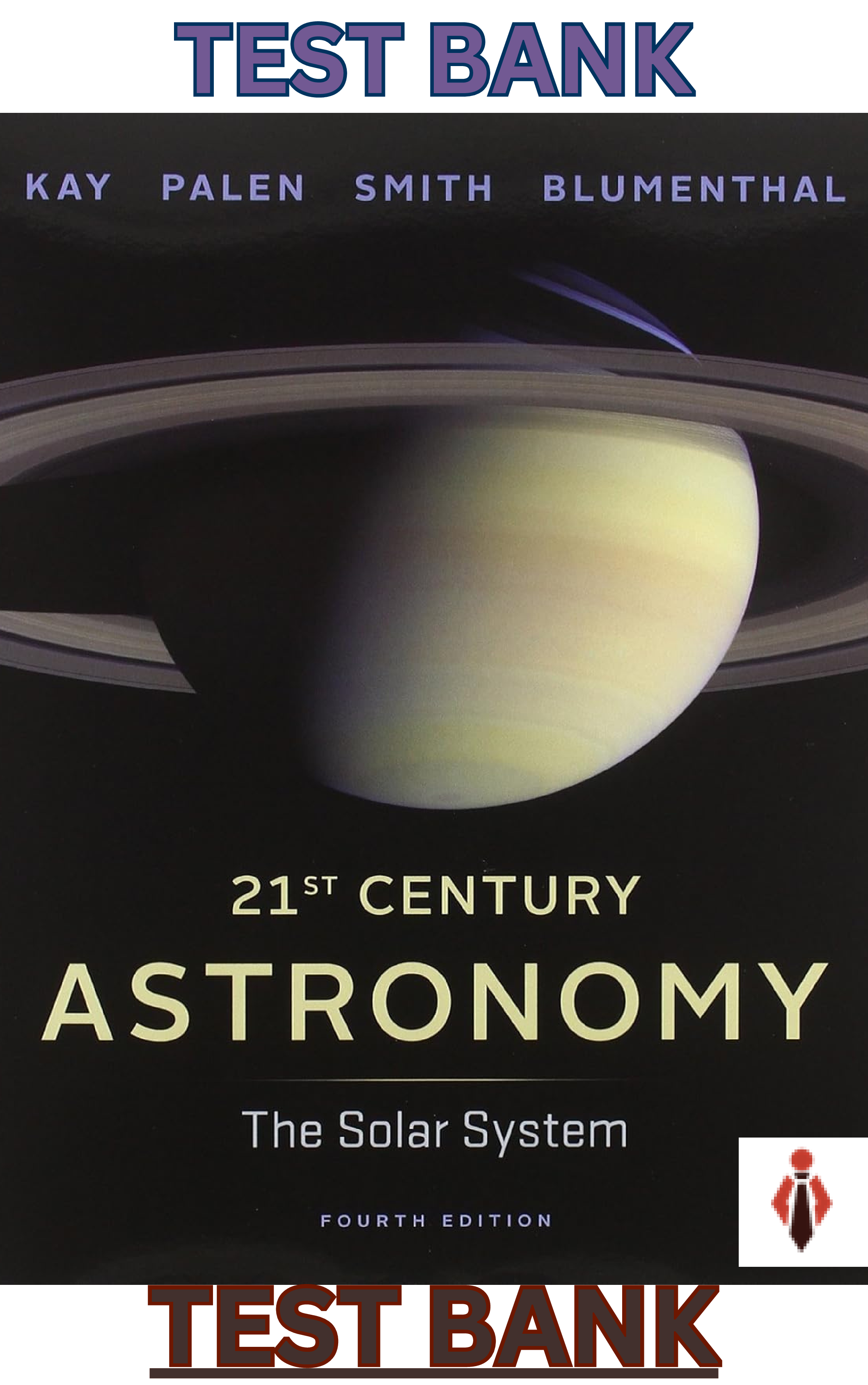TEST BANK life-the-science-of-biology-11th-edition-sadava-test-bank
Document Content and Description Below
Life The Science of Biology 11th Edition Sadava Test Bank Test Bank to accompany Life: The Science of Biology, Eleventh Edition Sadava • Hillis • Heller • Hacker Chapter 2: Small Molecu... les and the Chemistry of Life TEST BANK QUESTIONS Multiple Choice 1. An atom with has an atomic mass of 14. a. 14 neutrons b. 14 electrons c. 7 neutrons and 7 electrons d. 7 protons and 7 electrons e. 6 protons and 8 neutrons Learning Outcome: 2.1.1.a Describe the structure of an atom. Bloom’s Level: 3. Applying 2. Which statement about an atom is true? a. Only protons contribute significantly to the atom’s mass. b. Only neutrons contribute significantly to the atom’s mass. c. Only electrons contribute significantly to the atom’s mass. d. Both protons and neutrons together contribute significantly to the atom’s mass. e. Both protons and electrons together contribute significantly to the atom’s mass. Learning Outcome: 2.1.1.a Describe the structure of an atom. Bloom’s Level: 1. Remembering 3. What is the difference between an atom and an element? a. An atom is made of protons, electrons, and (most of the time) neutrons; an element is composed of only one kind of atom. b. An element is made of protons, electrons, and (most of the time) neutrons; an atom is composed of only one kind of element. c. An atom does not contain electrons, whereas an element does. d. An atom contains protons and electrons, whereas an element contains protons, electrons, and neutrons. e. All atoms are the same, whereas elements differ in structure and properties. Learning Outcome: 2.1.1.a Describe the structure of an atom. Bloom’s Level: 2. Understanding © 2017 Sinauer Associates, Inc. Full download all chapters instantly please go to Solutions Manual, Test Bank site: testbanklive.com 4. In the history of the discovery of the parts of an atom, the neutron was discovered after the proton and electron. What property of a neutron made it more difficult than the proton or electron to discover? a. Diameter b. Location in the nucleus c. Mass d. Lack of charge e. Presence in isotopes Learning Outcome: 2.1.2.a Compare and contrast the properties of protons, neutrons, and electrons. Bloom’s Level: 3. Applying 5. The number of protons in a neutral atom equals the number of a. electrons. b. neutrons. c. electrons plus neutrons. d. neutrons minus electrons. e. isotopes. Learning Outcome: 2.1.3.a Explain why atoms typically have no overall electrical charge. Bloom’s Level: 1. Remembering 6. Which of the following statements about the atom is true? a. There are usually more protons than electrons in an atom because the negative charge of an electron is larger than the positive charge of a proton. b. The negative charge of an electron adds mass to an atom without influencing other properties. c. In an atom with a neutral charge, the number of electrons is equal to the number of protons. d. The number of electrons determines whether an atom of an element is radioactive. e. The energy level of electrons is higher in shells close to the nucleus of the atom. Learning Outcome: 2.1.3.a Explain why atoms typically have no overall electrical charge. Bloom’s Level: 2. Understanding 7. A lithium atom contains three protons. For this atom to remain inert in an electric field, it must also contain a. three neutrons. b. three electrons. c. two neutrons and two electrons. d. no electrons. e. no neutrons. Learning Outcome: 2.1.3.a Explain why atoms typically have no overall electrical charge. Bloom’s Level: 3. Applying 8. Refer to the table below. Four samples taken from an underground geologic site were analyzed in a chemistry lab. The table summarizes the elements found in greatest abundance in each sample. Which sample(s) could have originated from living sources? a. C only b. A and B c. B and C d. A and C e. B, C, and D Learning Outcome: 2.1.4.a Compare the elements found in living tissue with elements found in nonliving matter. Bloom’s Level: 4. Analyzing 9. The six elements most common in organisms are a. calcium, iron, hydrogen, phosphorus, potassium, and oxygen. b. water, carbon, hydrogen, nitrogen, sodium, and oxygen. c. carbon, oxygen, hydrogen, phosphorus, sulfur, and nitrogen. d. nitrogen, carbon, iron, sulfur, calcium, and hydrogen. e. phosphorus, helium, carbon, potassium, hydrogen, and oxygen. Learning Outcome: 2.1.4.a Compare the elements found in living tissue with elements found in nonliving matter. Bloom’s Level: 1. Remembering 10. The number of different natural elements found in the universe is closest to a. 18. b. 54. c. 86. d. 94. e. 146. Learning Outcome: 2.1.4.a Compare the elements found in living tissue with elements found in nonliving matter. Bloom’s Level: 1. Remembering 11. The best reference source for the atomic number and mass number of an element is a. a good chemistry text. b. a dictionary. c. the periodic table. d. a general physics book. e. a good biology text. Learning Outcome: 2.1.5.b Use the periodic table to compare and contrast the atomic structures of different elements. Bloom’s Level: 1. Remembering 12. Which element has a higher atomic mass than phosphorus? a. Hydrogen b. Oxygen c. Sodium d. Magnesium e. Calcium Learning Outcome: 2.1.5.b Use the periodic table to compare and contrast the atomic structures of different elements. Bloom’s Level: 4. Analyzing 13. According to the periodic table, which element has the same number of outer shell (valence) electrons as oxygen? a. Calcium b. Nitrogen c. Fluorine d. Sodium e. Sulfur Learning Outcome: 2.1.5.b Use the periodic table to compare and contrast the atomic structures of different elements. Bloom’s Level: 3. Applying 14. According to the periodic table, the compound that sulfur forms with hydrogen is most like a. NH4+. b. NH3. c. H2O. d. HF. e. HCl. Learning Outcome: 2.1.5.b Use the periodic table to compare and contrast the atomic structures of different elements. Bloom’s Level: 4. Analyzing 15. Carbon and silicon have the same number of a. protons. b. valence (outer shell) electrons. c. neutrons. d. electrons. e. protons and neutrons. Learning Outcome: 2.1.5.b Use the periodic table to compare and contrast the atomic structures of different elements. Bloom’s Level: 3. Applying 16. Which pair has similar chemical properties? a. 12C and 14C b. 12C and 40Ca c. 16O and 16N d. 1H and 22Na e. 18O and 45Ca Learning Outcome: 2.1.5.b Use the periodic table to compare and contrast the atomic structures of different elements. Bloom’s Level: 2. Understanding 17. The atomic number of an element is the same as the number of _ in each atom. a. neutrons b. neutrons plus electrons c. neutrons plus protons d. protons e. protons plus electrons Learning Outcome: 2.1.6.a Analyze the number of protons and neutrons present in an atom from its atomic number and mass number. Bloom’s Level: 1. Remembering 18. The mass number of an atom is determined primarily by the it contains. a. number of electrons b. number of protons c. sum of the number of protons and the number of electrons d. sum of the number of protons and the number of neutrons e. number of charges Learning Outcome: 2.1.6.a Analyze the number of protons and neutrons present in an atom from its atomic number and mass number. Bloom’s Level: 1. Remembering 19. A stable isotope of phosphorus has an atomic number of 15 and an atomic mass of 31. How many neutrons does this isotope of phosphorus have? a. 14 b. 16 c. 30 d. 31 e. 46 Learning Outcome: 2.1.6.a Analyze the number of protons and neutrons present in an atom from its atomic number and mass number. Bloom’s Level: 3. Applying 20. Carbon-12 is the most abundant isotope of carbon on Earth. Carbon-13 makes up about 1 percent of Earth’s carbon atoms and is useful for radio imaging. Which of the following is true? a. Carbon-13 has more protons than carbon-12. b. Carbon-13 has more neutrons than carbon-12. c. Carbon-13 has more electrons than carbon-12. d. Carbon-13 has an electronic configuration that is different from that of carbon-12. e. Carbon-13 has an equal number of protons and neutrons. ...............................................................continued..................................................................................... [Show More]
Last updated: 1 year ago
Preview 1 out of 90 pages
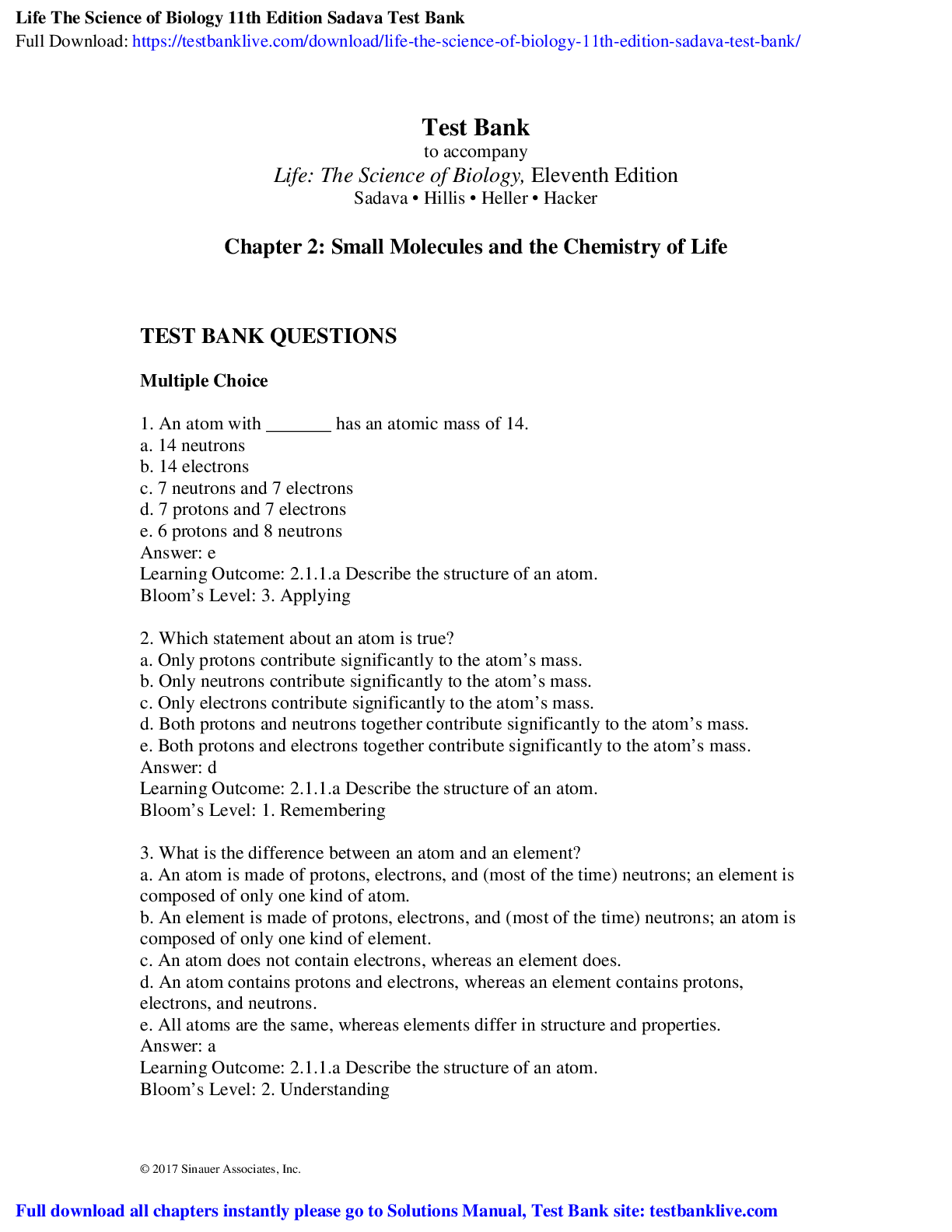
Reviews( 0 )
Document information
Connected school, study & course
About the document
Uploaded On
Aug 27, 2021
Number of pages
90
Written in
Additional information
This document has been written for:
Uploaded
Aug 27, 2021
Downloads
0
Views
37


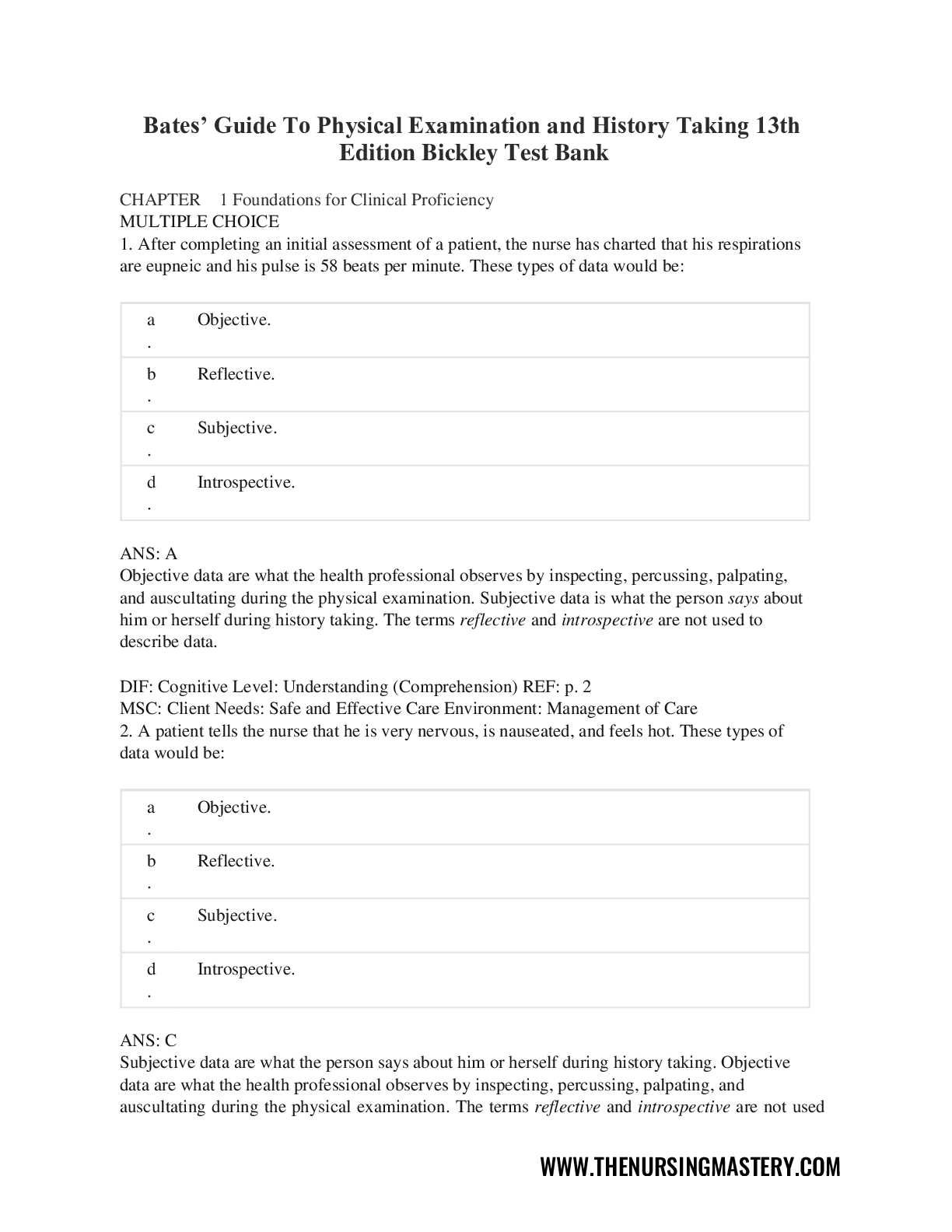
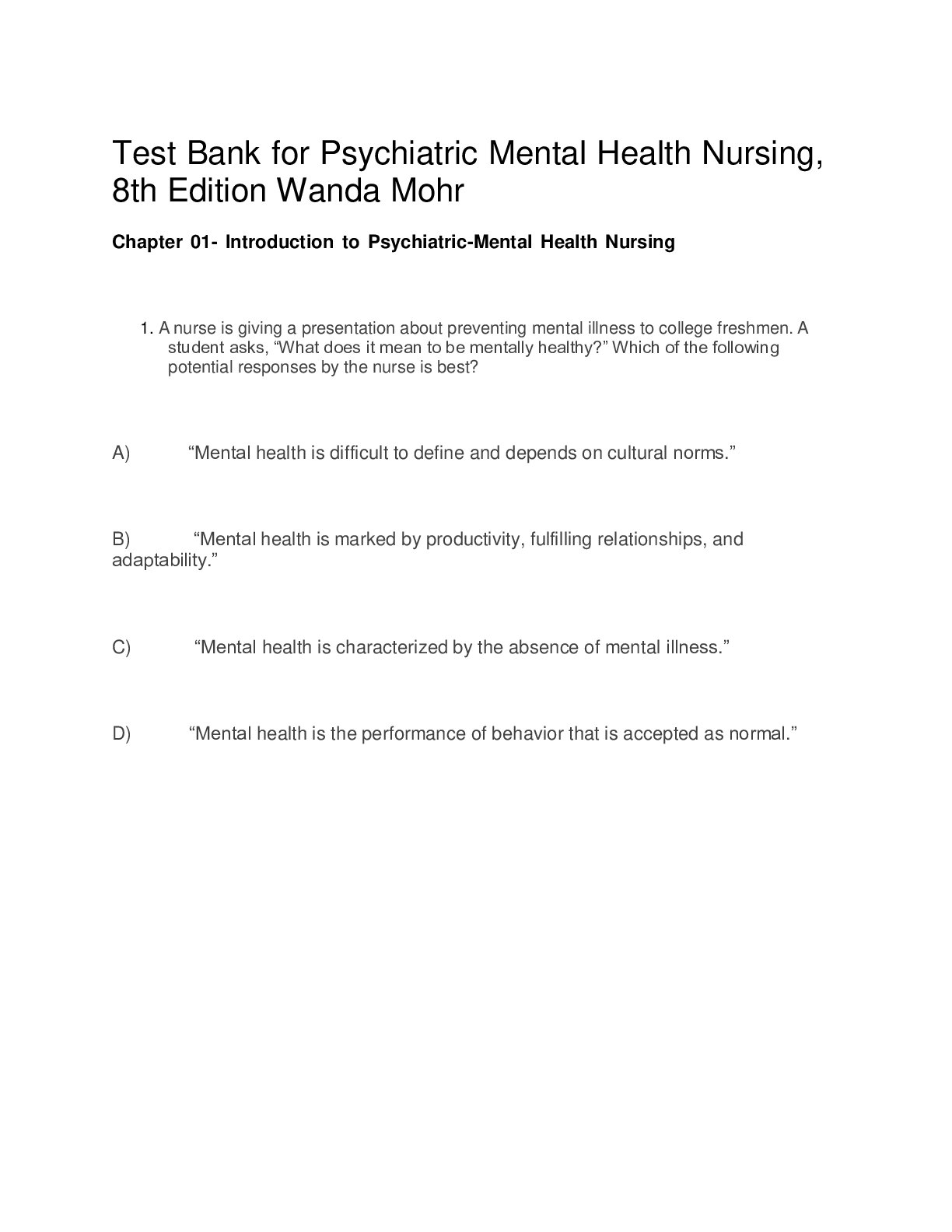
.png)





